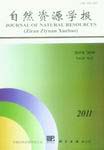Resources Safety
LOU Wei-ping, JI Zong-wei, QIU Xin-fa, WU Li-hong, HE Xiao-xiao
This paper takes tea production in Xinchang County of Zhejiang as an example, under the principle of disaster risk analysis and requirement for agricultural insurance, combined with characteristics such as huge topographic relief and significant difference in microclimate in southern mountain area of China, carries out risk evaluation and agricultural insurance product design through elaborating frost disaster which affected tea production in March at village & township level. Firstly, the paper confirms tea's economic output changes from time to time in productive life based on tea's daily economic output in normal years of tea planting base; combined with economic loss rate due to frost during/before productive life in previous years to confirm frost weather index—minimum temperature in a period before productive life or after productive life, different minimum temperature is in accordance with tea's economic loss rate. Support Vector Machine (SVM) is used to extend mesoscale automatic weather station's minimum temperature data to 30 years in specific to non-linear relation existing among meteorological data of mesoscale automatic weather station in villages, towns and county; minimum temperature corresponds to tea's economic loss rate, therefore it's possible to calculate different levels of frost risk based on minimum temperature data and confirm tea's economic loss risk, and to solve problems such as tea's short planting period, short accumulation period for mesoscale automatic weather stations and unable to meet risk analysis requirement. There're certain differences between risk results calculated on different risk analysis models. The article applies probability density function fitting distributions such as Beta, Exponential, Gumbel, Gamma, Generalized Extreme Value, Inverse Gaussian, Logistic, Log-Logistic, Lognormal, Lognormal2, Normal, Pareto, Pareto2, Pearson Type V, Pearson Type VI, Student, Weibull to minimum temperature data sequence in every township and street in the study area. Parameter estimation in distribution model applies maximum likelihood method, both of Anderson-Darling and Kolmogorov-Smirnov examination selected from different production periods in different townships and villages passed significance level of 0.05. Almost coincidence distribution of P-P drawing's tailer and diagonal line confirms that Generalized Extreme Value distribution's risk probability estimation as the best theoretical probability distribution function, thus being relatively stable with realistic risk evaluation result. On the basis of quantitative risk analysis and considering actual needs of policy-based agricultural insurance operation, combined with advantages of regional output insurance and weather index, the paper designs tea's frost weather index insurance. It is to confirm insurance rate and compensation agreement in a pre-designated area on the basis of frost caused economic loss rate and occurrence risk in the case that frost happens during tea's production life. Tea's frost weather index is weather index corresponds to pre-determined frost meteorological event, every index value corresponds with certain tea economic loss rate and claim ratio. This paper suggests to carry out compensation according to frost weather index confirmed by meteorological data observed by mesoscale automatic weather stations in every township, village and street, compensation index for rural household and insurance company is measured by representative weather stations closest to rural households, therefore basis risks, adverse selection and moral risk are reduced. And there is no need to use huge human and non-human sources to inspect and judge losses in claim settlement after disaster, and the claim settlement efficiency is high but the claim settlement cost is low, hence this is a positive and effective technological measure to carry out tea insurance and promote sustainable development of agricultural insurance.
